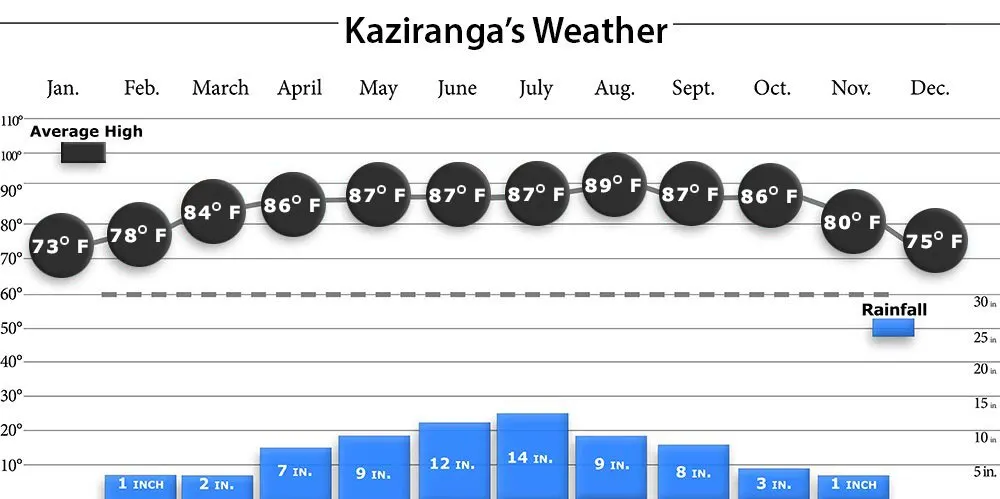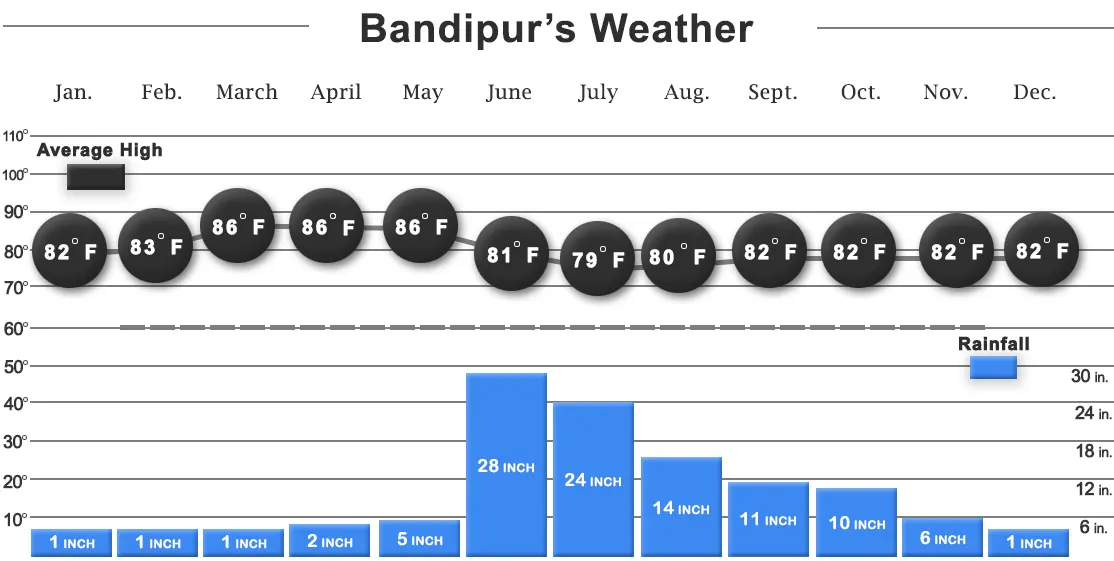

India’s Best Wildlife Parks
India’s Top 10 Best Wildlife
Parks are listed below along with some basic information about each park. To
protect its great variety of wildlife, India has over eighty national parks and four hundred
and forty-one sanctuaries. They are spread all over the country, and offer numerous
opportunities for the enthusiast to observe and enjoy a huge variety of wildlife. Some of
the major endangered and threatened species include two thirds of the world's remaining
tigers as well as the last remaining Asiatic lions. The gigantic one-horned rhino is found
here, as is the Asian elephant.
Birdwatchers can also select from various options, such as Keoladeo Ghana
National Park, one of Earth's most famous wetlands. There are dozens of bird species that
flock to different parts of India from far away nations and continents.
We select lodging at the wildlife parks based on the lodging provider’s
commitment to protecting their environment. We have a passion for India’s wildlife parks,
and go to great lengths to provide wildlife experiences that do not hamper conservation
efforts. You can stay at comfortable to incredibly luxurious Jungle Lodges and venture out
during the day to explore the parks and view wildlife. A safari into the jungle can be
exhilarating, and will provide memories that will last a lifetime. In some cases, you can
sit and watch from a watchtower or take a boat trip to observe the wildlife.
The 10 Best Wildlife Parks in India
Bandhavgarh National Park – Tigers & Leopards
The Tiger Reserve of Bandhavgarh National Park covers an area of 1537
square kilometers with a core area of 717 square kilometers. In our experience Bandhavgarh
offers the highest statistical chance in India of viewing tigers – our guests almost always
enjoy multiple sightings. Many hills and hillocks dot the area amidst valleys, meadows and
marshes. The Charanganga is the main river that flows through the park, and there are a
number of old tanks and water holes that provide reliable water sources for the wildlife.
With tropical dry and moist deciduous forests interspersed with grasslands, the vegetation
is chiefly of Sal Trees in the valleys and on the lower slopes, with bamboo found in
abundance throughout most of the park.
At the center of the park is Bandhavgarh Hill and the remains of the 2000 years old
Bandhavgarh Fort which sits atop the rocky outcrop and is surrounded by a large number of
smaller hills separated by gently sloping valleys. Concentrated around it, as well as in
other parts of the park, are numerous cave shrines with ancient Sanskrit inscriptions dating
back to the 1st century BC.
Bandhavgarh has an abundance of tigers and other wildlife species. Among mammals the most
common are chital, sambhar, barking deer, wild dog, leopard, wolf, jackal, sloth bear, wild
pig, langur, and, as in most Indian wildlife parks, uncountable numbers of monkeys. Reptiles
include the cobra, krait, viper, python, and chameleons. The reserve is rich in birds with
about 250 species of birds. The common ones are egret, jungle crow, peafowl, grey hornbill,
red wattled lapwing, crested serpent eagle, quails, owls, parakeets, and common teal.
Kaziranga Wild Life Sanctuary – One Horned Rhino & Tigers
Kaziranga National Park was designated a World Natural Heritage Site by
UNESCO in 1985.
It is spread over 858 square kilometers, and is located in the floodplains on both sides of
the Brahmaputra. At the heart of its mind-boggling biodiversity is the rich topography with
its lush hills and valleys, dissected by the majestic Brahmaputra and its many tributaries.
Patches of mixed deciduous forests are interspersed with vast stretches of savannah
grasslands, wetlands and chars of river islands formed by the shifting course of the
Brahmaputra.
The Park is ‘home’ to more than 70% of the world’s One Horned Rhinoceros, and harbours more
than 60% of India's wild buffalo population along with the only population of the Eastern
Swamp deer. Other wildlife found here are - Bengal Tiger, Leopard, the Indian Civet, Sambar,
Barking Deer, Hog deer, Hog Badger, the endangered Hoolock Gibbon, Capped Langur, Assamese
Macaque, Sloth Bear, Gangetic Dolphin, Otter and several species of turtles and tortoises.
The park also has a sizeable population of birds. Home to 25 Globally Threatened and 21 Near
Threatened species of birds, huge flocks of pelicans and rose-ringed parakeets can be
spotted here besides crested serpent eagles, grey-headed fishing eagles, red jungle fowl,
Bengal floricans, bar-headed geese and whistling teal.

Ranthambore National Park – Tigers & Leopards
Named after the once imposing 10th century fort whose ruins preside over
the park from a nearby hilltop, Ranthambore National Park offers excellent chances of seeing
tigers in the wild. It is the easiest park to access on a tour that involves India’s Golden
Triangle. In the 18th and 19th centuries the jungles here were the royal hunting grounds of
the Maharaja of Jaipur. In the mid-nineteenth century, the British Officer in charge of the
area started a program of conservation for the fast-dwindling wildlife. It became a Wildlife
Sanctuary in 1955 and a National Park (as part of Project Tiger) in 1973.
The park is surrounded by the Vindhya and Aravalli mountain ranges and is one of the greener
parts of the mostly desert state of Rajasthan. It is bordered by rivers on its north and
south, and there are many streams inside the park. Dry deciduous forests cover much of the
park, and the rest of the terrain can vary from flat grasslands to massive boulders to steep
ravines. There are six manmade lakes in the park that serve as watering holes for the
wildlife.
Over 30 different animals are found here, including tigers and leopards. There are three
different types of antelopes, over 250 kinds of birds, and a decent number of snub-nosed
marsh crocodiles. You can also find sloth bears, wild boars, monitor lizards, jackals, and
jungle cats, just to name a few.
The park has a number of ancient ruins of royal structures, and the combination of the
jungle, the wildlife, and the ancient ruins can be a photographer’s delight. Unlike Corbett
and certain other parks, there are no native elephants at Ranthambore, and safaris are
conducted on board 4WD vehicles.
Kanha National Park – Tigers & Leopards
The dense forests, open fields, and plethora of wildlife found in Kanha
National Park inspired Rudyard Kipling's The Jungle Book. Kanha has very good tiger
sightings, and it is frequently combined with Bandhavgarh National Park due its relatively
close proximity.
In 1955, 60 years after Kipling’s book was first published, Kanha National Park was founded
to protect the diverse wildlife and lush flora that inspired one of the most memorable tales
from India’s colonial British era. With boundaries stretching over 500-square-miles of
forests and plains, Kanha National Park is the largest tiger reserve and nature sanctuary in
Central India.
There are more than 1,000 flowering species of plants within the park boundaries, and
tigers, leopards, wild cats, and sloth bears are numerous and easily spotted while on safari
inside the park.
Best Time to Visit Kanha Park: Kanha National Park is closed to visitors
between July and September every year for conservation efforts. From October to June the
park is open to safari tours, which coincides with the area’s best weather and increased
chances to view the animals that are more active during the cooler months.
Kanha Park Highlights: It’s a rare treat for guests on our luxury tours of
India to experience the beautiful natural setting that inspired one of the most prolific
modern tales of India. Kanha National Park should not be missed while sightseeing in Madhya
Pradesh on one of our luxury tours of India.
Nagarhole National Park: Elephants, Tigers, Leopards, Bears
Nagarhole National Park, (also known as Rajiv Gandhi National Park),
was set up as a wildlife sanctuary in 1955 and gained National Park status in 1988. The park
stretches for over 643 square kilometers in the southern state of Karnataka. It is part of
the UNESCO designated Nigiri (Blue Mountain) Biosphere Reserve, one of
twelve Biosphere Reserves in India, and the entire Biosphere Reserve area is said to have
the largest population of tigers on our planet. This is one of the two best
Wildlife Parks in South India, and the lush and dense sub-tropical forests in this region
are home to a very diverse array of amazing wildlife and avian species, the latter of which
are both migratory and indigenous to the Park. Wild Elephant Herd sightings are common, and
there are frequent sightings of sloth bears, tigers, and leopards.
Best Time to Visit Nagarhole National Park: The park is open all year round
with the best time to visit being between September and May.

Bandipur National Park: Elephants, Tigers, Leopards, Bears
Bandipur National Park is separated from Nagarhole National Park by the
extremely scenic Kabini River and this 870 square kilometers sanctuary is also connected to
Mudumalai National Park and the Wayanad Wildlife Sanctuary. Together they form the largest
protected area for wildlife in Southern India and latest reports show that Bandipur now has
2500 Wild Elephants, 173 Bengal Tigers, and over 300 Leopards – a growth in
numbers that illustrates the success of the Park’s conservation efforts. This is one of the
two best Wildlife Parks in South India, and the lush and dense sub-tropical forests in this
region are home to a very diverse array of other fascinating wildlife and avian species, the
latter of which are both migratory and indigenous to the Park. Wild Elephant Herd sightings
are common, and there are frequent sightings of sloth bears, tigers, and leopards.
Best Time to Visit Bandipur National Park: The park is open all year round
with the best time to visit being between October and May.

Sasan Gir Lion Sanctuary – Last Home of the Asiatic Lion
The last home of the Asiatic Lion, Sasan Gir Lion Sanctuary is a model of
success for conservationists. A century ago, there was about 20 lions left in this area;
currently there are almost 300. The 'Gir Lion' (as it's now known) is relatively easy to
view and photograph, in comparison to the elusive tiger and most other big cats. This is
partially due to the fact that the protection offered to the wildlife in this Park is among
the best in India, so they have less fear of humans.
The 1424 sq kilometer Park is mostly hilly, and all-wheel drive vehicles are the best way to
explore the rough terrain. Jeep safaris are the chosen means of transportation in Sasan Gir.
There are a number of rivers that flow through Gir, and the green belts surrounding them
provide a striking contrast to the rest of the Park. Although not as lush and conventionally
scenic as some other sanctuaries, Sasan Gir has a stark charm all of its own, and its dry
deciduous jungle is also populated by teak and bush filled grasslands.
Sasan Gir has a large population of leopards, as well as more than a fair share deer and
antelope. Wild boar, panthers, hyenas, and jackals are found here, as are more than 300
species of birds. There is a large reptile population, including a crocodile farm that's
been developed in the jungle.
Kaladeo National Park – India’s Premier Bird Sanctuary
Bharatpur Bird Sanctuary is also known as the
Kaladeo Ghana Sanctuary. Once the shooting preserve of royalty, this small sanctuary is the
most spectacular water-bird sanctuary in India and it lies just off the Agra to Jaipur
highway. It is one of the major wintering areas for large numbers of aquatic birds from
Afghanistan, Turkmenistan, China and Siberia.
About 364 species of birds, including the rare Siberian Crane, have been recorded in the
park. The name Kaladeo is derived from the name of an ancient Hindu temple devoted to Lord
Shiva in the sanctuary's central zone, while the Hindi term "Ghana" implies dense, thick
areas of forest cover. Covering an area of just 12 square miles, Bharatpur Bird Sanctuary is
an interlocking ecosystem of woodlands, swamps, wet prairies and dry savannah.
Periyar National Park – Elephant Herds & Spice Plantations
Kaziranga National Park was designated a World Natural Heritage Site by
UNESCO in 1985.
Located in the lush jungles of Kerala, Periyar National Park offers among the best
opportunities to view elephants in the wild. A stop here is part of all our tours that
explore South India’s major attractions. A visit here includes a boat cruise on the magical
lake of the same name, which is where you will get to observe wild Elephant herds on the
banks. The sub-tropical flora in this region is spectacular and the world’s most prized
spices are grown here. A naturalist guided visit to a Spice Plantation is part of a visit to
this Park.
The terrain is hilly and the elevation of the park ranges from a few hundred feet to about
6000 feet above sea level. Periyar is home to just under a thousand elephants and also over
60 other mammal species including tigers, bison, deer, wild boar, and wild dog. There are
over 300 species of birds, and even 160 species of butterflies.
The park is situated around an artificial lake. Boat cruises around the lake offer great
opportunities to view wildlife. Guided treks are available for the more adventurous. You can
also observe from a few strategically placed watchtowers. Like Corbett National Park,
Periyar is very scenic country, and could easily pass for a resort area just on the merits
of its lush jungles, big lake, and surrounding hills.
Jim Corbett National Park – Tigers & Elephant Herds
India's most famous wildlife park, and the first park in Project Tiger,
Corbett National Park is easily accessible from Delhi by road, but is in a direction that
necessitates a roundtrip journey. Designated as a wildlife park in 1935, it was the first
wildlife sanctuary in Asia. A visitor to Corbett is guaranteed encounters with an amazing
diversity of wildlife, as well as a chance of coming across the elusive tiger. It is a large
and beautiful park, and safaris into the core area of the park are a thrilling experience.
The terrain is a mix; there are grasslands and forests, plains and mountains, even dry earth
and marshlands. The river Ramganga flows through Corbett, and if you reserve well in
advance, you can stay on its banks at the picturesque park headquarters at Dhikala. This
diversity in terrain produces a similarly large range of wildlife, while also offering some
spectacular scenery in places like Dhikala.
For viewing a wide variety of Indian wildlife, Corbett National Park has no equals. It
offers Northern India's best opportunities for observing wild elephant herds. Numerous kinds
of deer, monkeys, and lizards abound here. The gharial (Indian crocodile) makes its home
here, and so do leopards, wild boars, and jackals. It is one of India's best places for
birdwatchers, with almost six hundred species of birds.

Weather in India's Wildlife Parks











